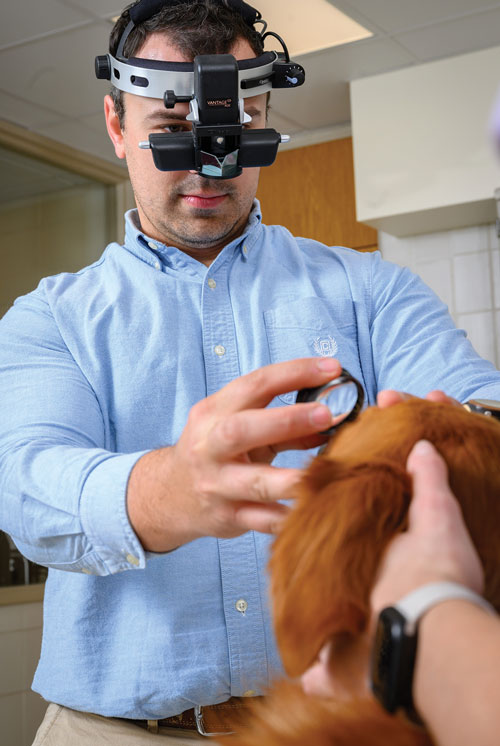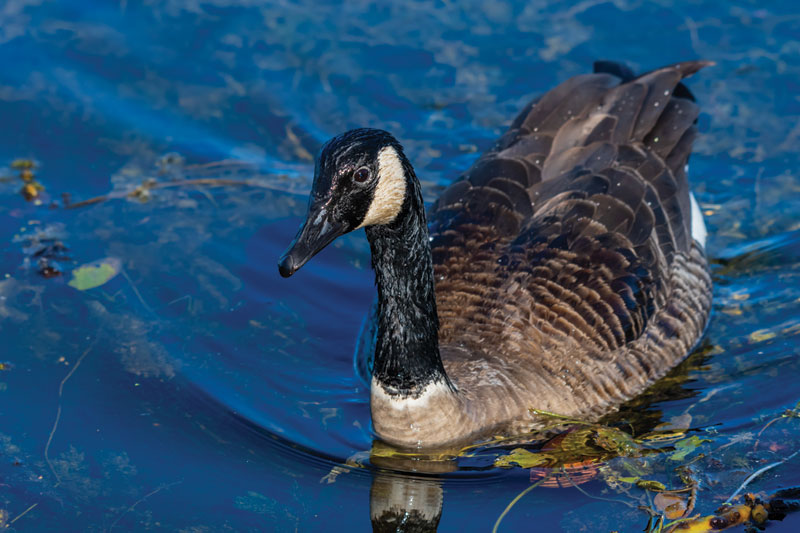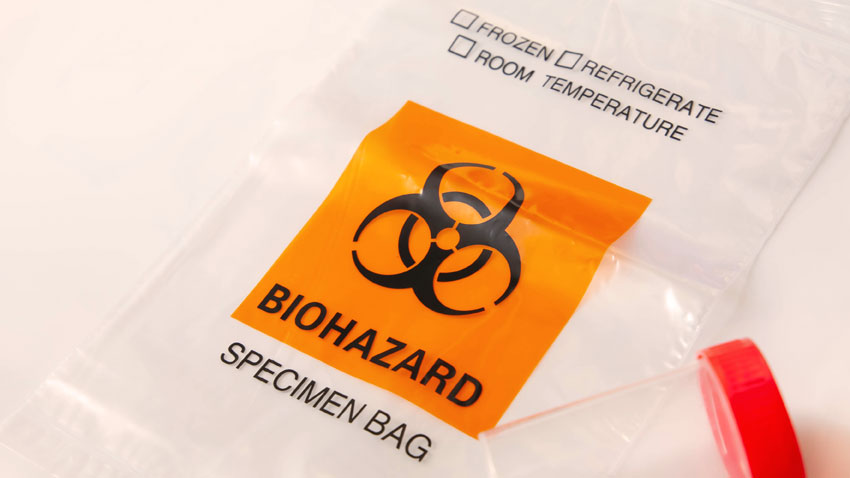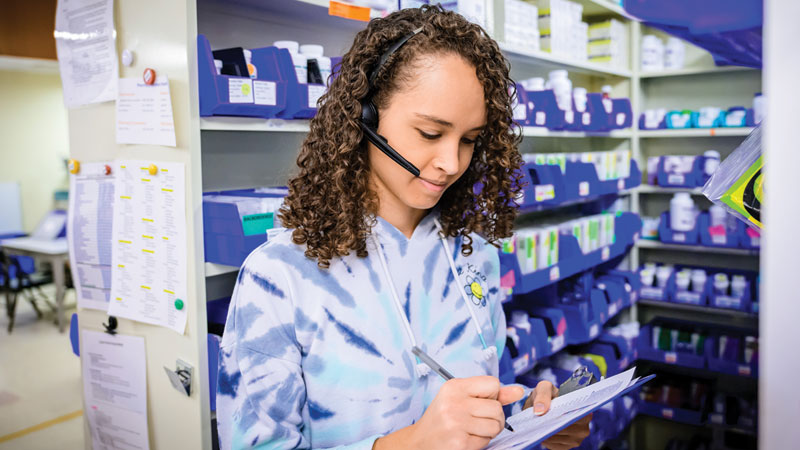Dr. Marlo evaluating a patient’s retina using fundoscopy.
By Todd Marlo, DVM, MS, DACVO
Glaucoma is often a frustrating disease for owners, veterinarians, and ophthalmologists. Changes can occur within the eye; vision can be lost quickly, and decisive decision-making is crucial.
Types of Glaucoma
Glaucoma presents either of two ways: primary or secondary. Primary glaucoma deals with a change to the iridocorneal angle that is genetic in etiology. Secondary glaucoma is due to another ocular disease, such as an intraocular mass, anterior lens luxation, or uveitis.
The key difference is that in primary glaucoma the contralateral eye is at risk of developing the disease as well. While many breeds are known to be at risk for developing primary glaucoma, better-known breeds include bassett hounds, Siberian huskies, and cocker spaniels.
Ophthalmologists use gonioscopy to determine how open or closed the iridocorneal angle is. High-resolution ocular ultrasonography can also be used for this purpose. Dogs with a closed or narrow angle are at a higher risk; therefore, prophylactic therapy with either dorzolamide or timolol would be indicated for the contralateral eye.
Medication Options
A variety of glaucoma medications are available, sometimes leading to confusion on what to prescribe. Medications can be categorized into those that decrease aqueous humor production, those that increase aqueous humor outflow, or those that do both.
Aqueous humor production is reduced with dorzolamide and timolol. Outflow is increased with pilocapine and demacarium bromide. Prostaglandin agonists, such as latanoprost, have both qualities. Dorzolamide, timolol, and latanoprost are the most commonly prescribed glaucoma medications. Frequency can range from once daily for controlled cases, to four times daily for patients in an acute glaucomatous crisis.
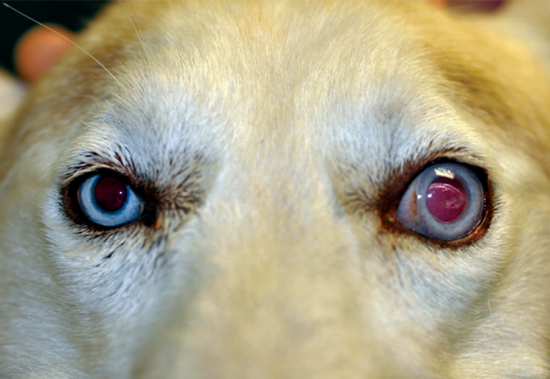
Non-medical Options
Should medications fail or not be feasible due to the dog’s behavior, there are other treatment options. These include enucleation, intrascleral prosthesis, or an intravitreal genticin injection. The goal for these procedures is to restore the animal’s comfort, with the latter two being also more cosmetically appealing for the owner.
Additionally, there are glaucoma surgeries that can be used in conjunction with medical therapy, including trans-scleral cyclophotocoagulation, goniovalve placement, and endolaser. These procedures need to be performed by a boarded veterinary ophthalmologist, who will have the necessary equipment, skill, and experience to deal with complications. These procedures have varying success rates and cost.
Summary
Glaucoma can be a very scary disease for owners. It often may seem that the only option is enucleation. However, at a minimum, topical hypotensive therapy should be initiated.
While some patients will fail medical therapy, others can regain vision or comfort. In all cases, I recommend conferring regularly with a veterinary ophthalmologist who can indicate when it’s time to explore interventional surgery or other medical options.

